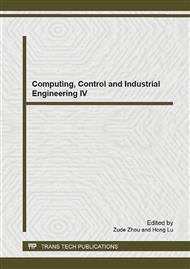p.469
p.473
p.479
p.485
p.489
p.497
p.500
p.505
p.509
The Prediction of the Hot Strip's Width Based on Bayesian Neural Network
Abstract:
The prediction and control of the hot strips width is one of the key factors to reducing metal loss in hot roughing. Bayesian approach can control the parameters of neural network by calculating some super-parameters. This paper proposes a prediction model of the hot-rolled steel strips width based on Bayesian Neural Network, through application on the data of a 1500mm steel rolling production line in China, the MAE (Mean Absolute Error) between the predicted width value and real width value less than 10mm, this result shows that the precision of prediction is superior to some traditional mathematical model such as BP-neural networks. In this paper, we conclude that Bayesian neural network can improve the forecast precision of the hot strips width.
Info:
Periodical:
Pages:
489-493
Citation:
Online since:
October 2013
Authors:
Price:
Сopyright:
© 2013 Trans Tech Publications Ltd. All Rights Reserved
Share:
Citation:


